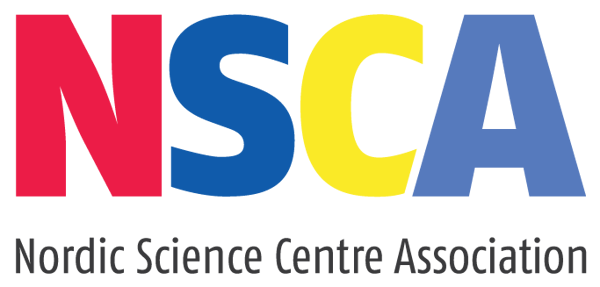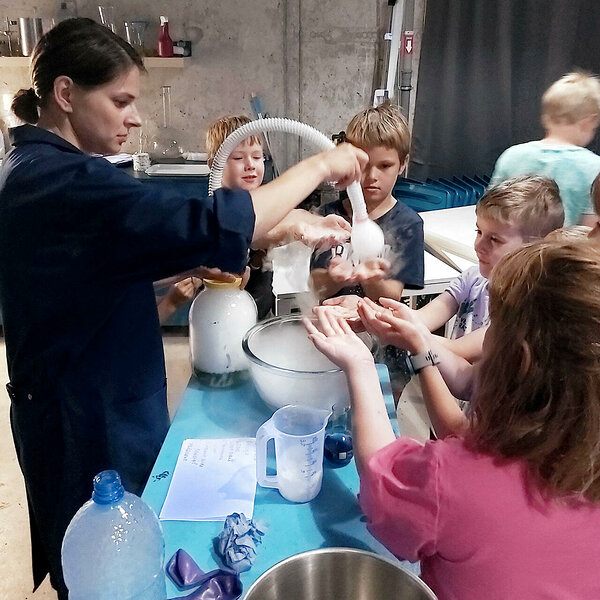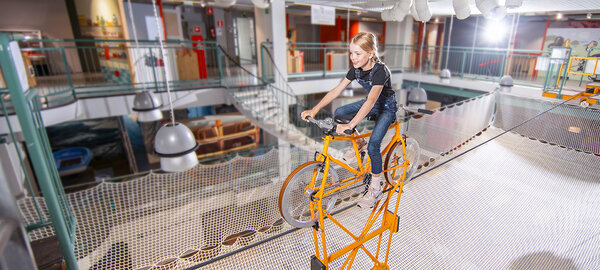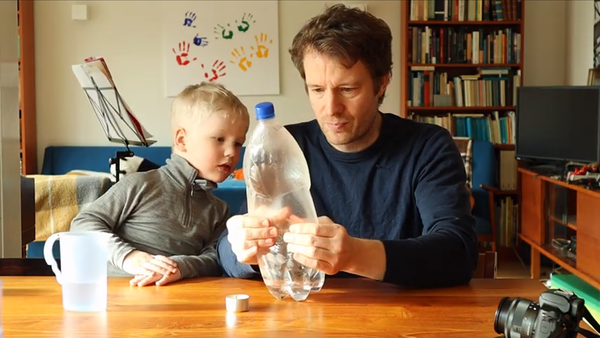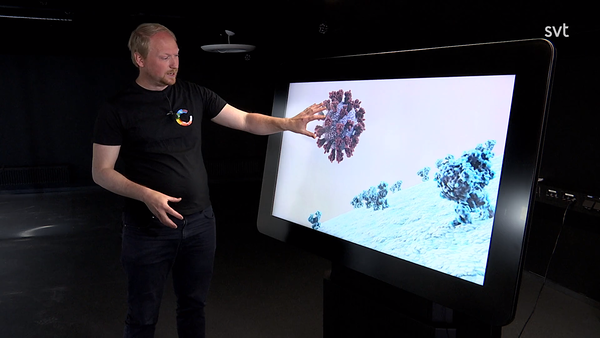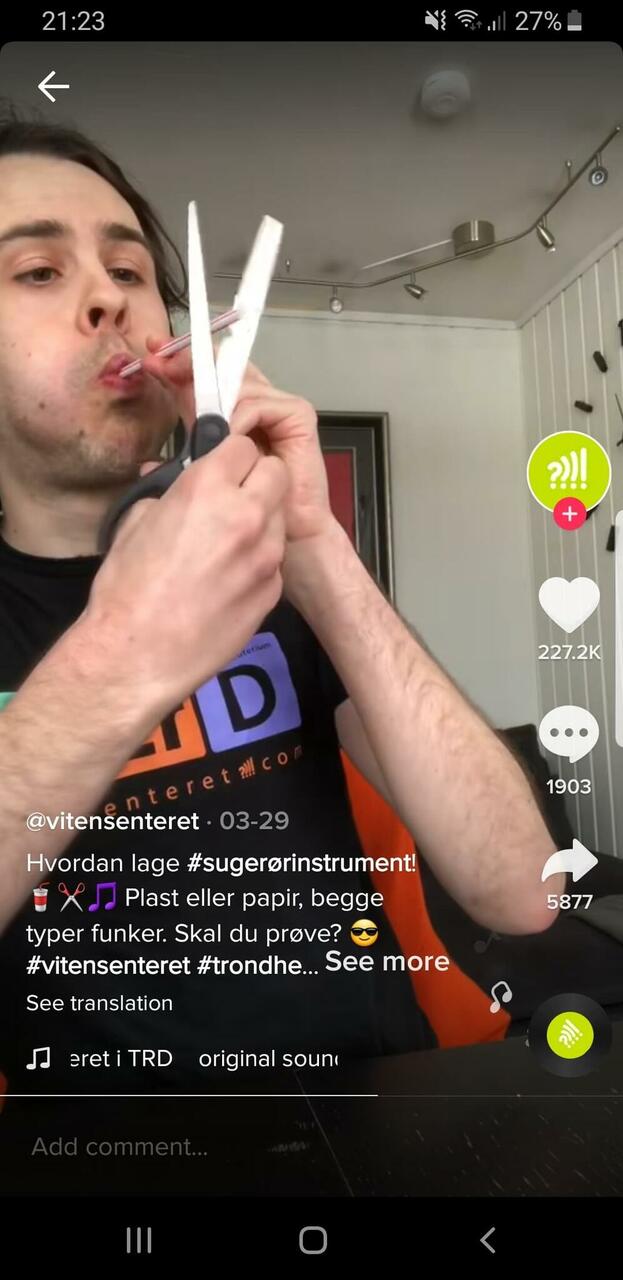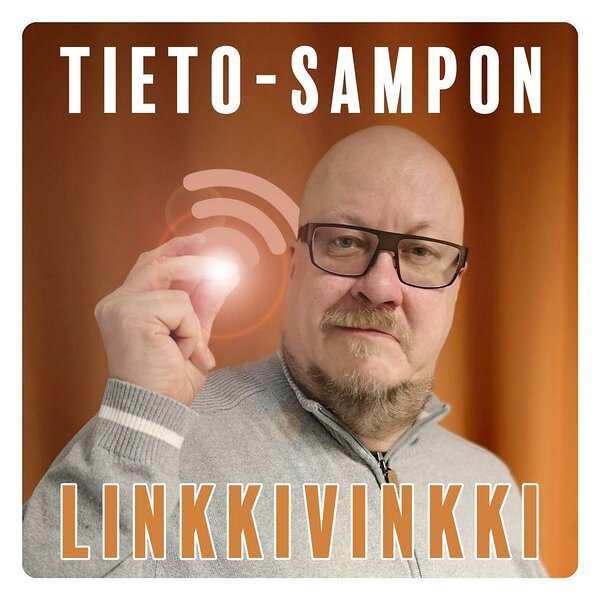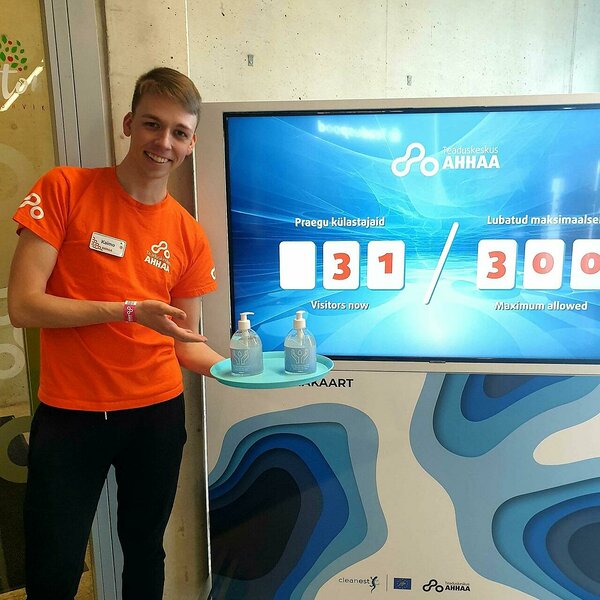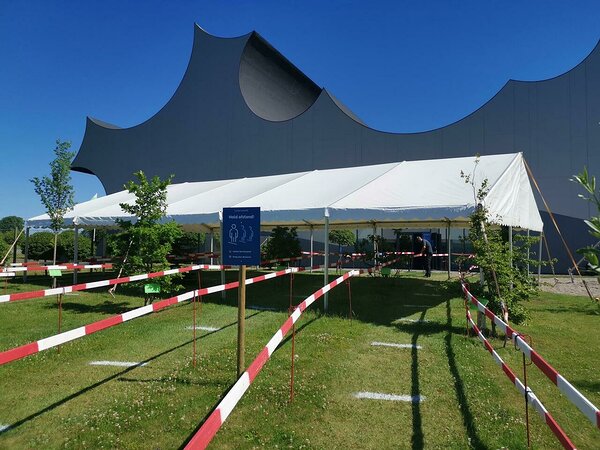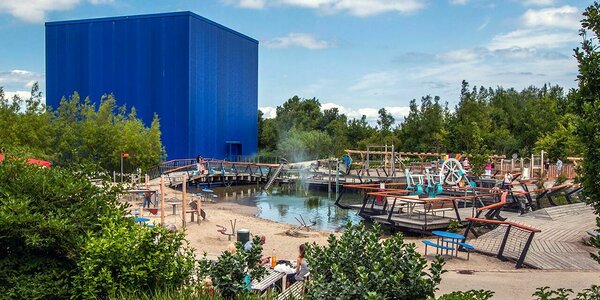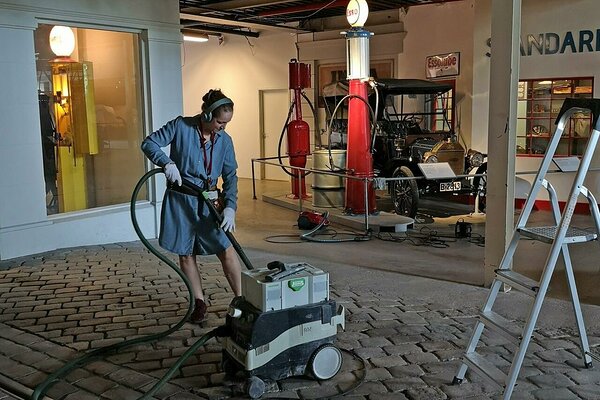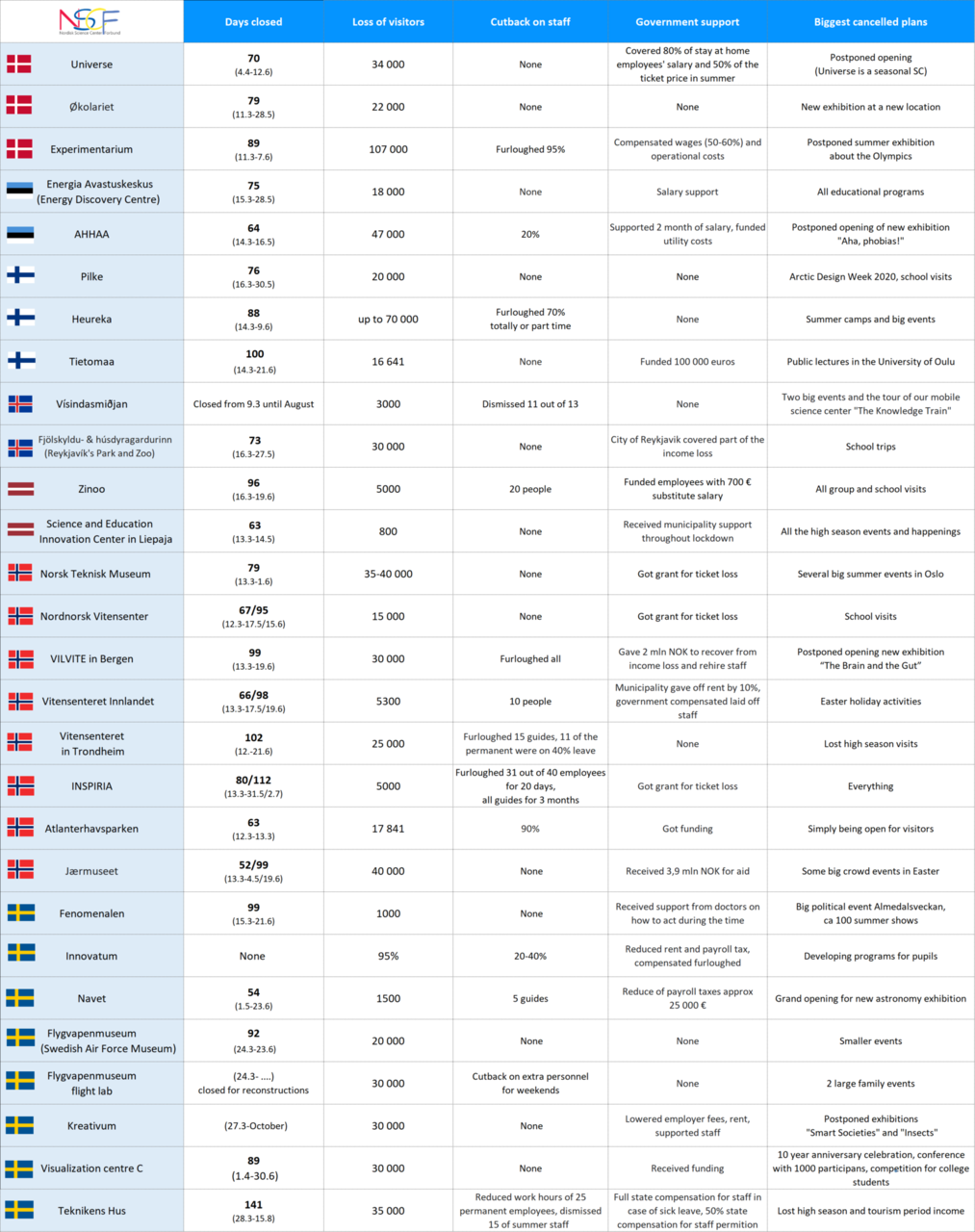by
Saile Mägi
We all know how COVID-19 affects our bodies. The most common symptoms are similar for all, nevertheless your country of origin. The infection may cause you to develop a fever and a dry cough. In severe cases, you can end up with breathing difficulties. Mild cases usually recover within two weeks, while the unlucky cases may suffer up to 6 weeks. And sadly there are also occurrences, which end up with death.
But how has this tiny virus affected different science centers in the Nordics? This is actually something we can’t put on paper so easily. There are 35 members in the Nordic Science Centre Foundation (NSCF), which therefore gives us 35 different versions about the influence of COVID-19. Yes, the first stage of the coronavirus pandemic was common for most of the members - in spring they closed their doors for the visitors for an undetermined period of time. But from this step on, every member’s experience developed into a different, unique one.
The following article reflects on the situation and offers thoughts from the members of NSCF from the beginning of this summer. In order to gather this information, 18 members filled a questionnaire and 5 gave an in-depth interview between June and July.
First ones to get the hit
One thing is sure! The first consequence of COVID-19 - mutual to all of the NSCF members - was a loss of high season visitors. Among those were school groups visiting during April and May and tourists from the first half of the summer. As Pauls Irbins from Zinoo (LV) stated: “Science centres are the ones at the frontier, the first ones to get the hit at the economic crisis. Since the school trips in the spring give us (Zinoo) the biggest income in the year, we lost it all.”
The loss in the amount of visitors varied heavily between science centres, since it depended on the institution’s size. For some, it started with 1000, a more common number was between 20-40 000, but in some cases it could also reach over 100 000 visitors, as it was for the Experimentarium in Denmark. The loss of visitors and therefore, ticket sales, wasn’t the only problem. To cope with the situation, science centres needed to minimize their budget, the staff number, and to cut back on their working hours. For instance, when talking with Zinoo at that time, there were 2 people out of 22 still officially working. Pauls was one of them. “We had to lay off all the staff in Cesis and so we left only 2 people in Riga,” he said, as Zinoo fully depends on their own income.
Luckily, most of the science centres still managed to use support from the government and furlough their permanent staff until the reopening. Besides that, the decisions of local governments and municipalities were one of the main reasons that made every centre’s adaption with the pandemic unique.
In government we trust…
In times of uncertainty, the regulations of power were the ones to follow. As Jonas Lutterman from Universe (DK) described it: “We learned how badly the pandemic can hit us and how big the power of the government is. It made us feel small, since we hoped to decide on our own, but instead, the government was the one who made the decisions.”
The restrictions - aimed to stop the virus from spreading -
also impeded the work process. “Of course
we would have wanted to get more things done in our centre during this period.
But it simply wasn’t possible if only 2 people were allowed to be in the
house,” Krista Keedus from the
maintenance of Energy Discovery Centre (EE)
described the situation. Pilvi Kolk
from AHHAA (EE) said: “We tried to start
working in the middle of the crisis like we would usually do in our
back-office. Then the government prolonged the situation. We should have not
run in the middle.”
In some cases, the government also influenced the progress of the work done online. For instance, if the government funded the workers’ “stay at home”-time, it also meant that they couldn’t be assigned any tasks to complete in home offices.“The staff was not allowed to work during the closedown due to the compensation packages - and the management had to conduct virtual meetings,” Hanne Larsen from Experimentarium (DK) described the situation. In Experimentarium, only 5% of the employees were working during that time. In advance, we can say that for some science centres, the limitation of workforce usage was also among the reasons why they decided not to create online content for the visitors.
But in the end, the governments and municipalities kept many places going, and with funding injected them hope and at least some level of security. “We weren’t ready for the fact that the Estonian government is capable of supporting us so noticeably,” said Krista from Energy Discovery Centre. “There was no information about it in the beginning and we couldn't count on it. If we would have had the knowledge from the day one, then we definitely would have done better with managing the crisis.”
Life behind closed doors
On average, the Nordic science centres were closed for 87
days. For example, Tietomaa, the
oldest science centre in Finland, was closed for exactly 100 days. “It is the longest period Tietomaa has ever
been closed in 32 years,” said the liaison coordinator Sampo Puoskari, adding humorously: “It
has been also the biggest and best maintenance period in our history!”
Tietomaa is a small science centre and in this situation, their size was an
advantage. They managed to freshen up the place without going against the
restrictions. Among all, they installed their newest exhibit, the bicycle on
the rope. “It was the luckiest
coincidence that the bicycle arrived exactly for the closedown,” said Sampo and added: “Originally, we planned to set it up outside the opening hours and even
now it still took more time than expected.”
And indeed, even bigger places than Tietomaa found ways to juggle their staff and manage to do minimum maintenance. But there were many other aspects that became the new focus in managing science centres during the closedown. The new priorities included keeping employees up to date, interacting with visitors through social media, budget rearrangements, planning safe re-openings, developing digital management processes, or simply, as Gudrun Bachmann from Visindasmidjan (IS) said, doing the things you never could do before. “That was actually the best part - to suddenly have time to do things that the usual routine does not really allow time for.” And perhaps the most mentioned activity was to focus on maintaining a positive atmosphere. “We tried to make sure everyone remained hopeful, motivated and positive towards the company,” said Lars Marøy from VilVite (NO).
Virtual was the new reality
Teams, Zooms, Skype, Slack – there were numerous online platforms which became the new work environments, not only in the science centres, but in general in the society. And you can’t say it was necessarily a bad thing. “This pandemic taught us to get used to working online and be better and more effective at it,” said Jan Andresson from Norsk Teknisk Museum (NO) “For example, we used to have meetings with Norwegian science centres 3-4 times a year by travelling to someone's place. Now we are meeting online every other 2 weeks and get more done!” Arnfinn Rokne from Vitensentret (NO) also joined in with the praise. All their internal communication and co-working is now done through Teams. “Going digital has changed a lot, it gave us shorter and more effective meetings.” But he also added that the biggest challenge amongst the transition was losing all the small-talk. “We realized how important and effective small talk is for innovation and developing original ideas and projects.”
Going online didn’t only help with getting things done in this bizarre time. It also allowed to remind workers that they are not alone. “We met every day at 11 o’clock in Teams with my group of colleagues. Even if it was just to say “Hello!” and discuss a few small things,” said Jan Andersson from Teknisk Museum.
Science can be experienced everywhere – even online
Even though we are used to the fact that a science centre is
something you can best experience by visiting it physically, several members
still found that it is important to reach out to visitors online, through
social media. The act of teaching science should by no means suffer due to the
limitations of the environment. “We had
focus on presenting in more "simple" and direct ways than we were
used to - when the hands-on approach disappeared, there had to be a shift in
how we communicate,” said Guðrún
Bachmann from Visindasmidjan.
This is the part where science centres in the Nordics got creative. (At least the ones who still had enough employees left for the task, since creating content for social media platforms is a time-consuming project.) For example, science centres in Sweden collaborated with each other and labelled all the videos and social media posts with the hashtag #sciencetillsammans. Økolariet (DK) created 17 sustainable goals to follow. Visindasmidjan (IS) produced several “Try at home” experiment videos for little kids. Teknisk Museum (NO) created a drawing competition for kids, and printed out the winners’ work, using 3D technology. Visualiseringscentre C (SE) produced a high quality animation to explain how coronavirus acted in a body. AHHAA broadcasted a live outdoor science show and Universe even made a live event about their opening.
Vitensenteret in Trondheim, Norway was one of the few who made themselves an account for TikTok, the most trending app during the pandemic. “TikTok was very successful for us, because we had direct contact with our target group. Our most popular video got 2 million views, but in general the number of views was between 5K and 50K,” announced Arnfinn Rokne.
Then again, Tietomaa continued to focus on Facebook and created a new avatar, “Tieto-Sampo”, to share daily information. “Since we were faced with the crisis and the crisis itself needed a face, then for a whole month, Tietomaa-Sampo shared science-related information on Facebook. It was an everyday reminder and update to our visitors that Tietomaa is still there and operating,” said the original Sampo and added that due to its success they plan to continue with it in the future.
Several science centres also brainstormed on the topic of producing online materials for schools. “We are building a streaming studio and will develop teacher courses, educational programmes for schools and live shows for youth,” Arnfinn from Vitensenteret introduced their plans.
Welcome back, visitors!
The first science centres started to open their doors from the end of May. Some did it in two phases, allowing only children and school groups to attend the areas within the first weeks. The science centres were cleaner than ever. All places were filled with disinfection devices, exhibits were constantly cleaned, visitors had to maintain safe distance from each other and so on. Of course, not all exhibits were displayed in the usual way anymore. “Our movie is now in 2D, not 3D. We temporarily got rid of glasses since we do not have enough staff to clean them constantly,” described Sampo from Tietomaa. In some places, quite a few exhibits didn’t make the cut at all, depending on their “touching ratio”.
Still, during those first weeks SCs were quite empty, due to fixed capacity limits and the general unease about staying in public rooms. Jonas from Universe suggested that his colleagues in Nordics should open up centres as soon as possible. “It takes a few weeks until the numbers increase! And you can't learn how to raise the number of visitors without experimenting with real audience.” For instance, Universe found out that not all digital solutions work. “We created a digital queuing app for some of the exhibits and the Universe visitors needed to download it to register themselves for the queue. After 2 weeks we removed it, because it wasn´t dynamic. We had to guess the capacity of exhibits in advance and couldn't reach the maximum.” The Universe team also noticed that people were actually handling queues quite well and followed all the health regulations and signs.
Compared to most of the other science centres in the Nordics, the Universe was more fortunate in coping with the pandemic, since their premise is mainly a huge open land - a park. After a couple of weeks, their visitor numbers started to go back to normal and with the help offered from the government with funding ticket prices, they were even positive that they could still hit the set ambition for the year. Thus, taking from their example, it is understandable why different science centres in the interviews said that in the future they plan to focus more on creating outdoor activities and exhibits.
If I could go back in time and..
...do something differently in managing the crisis, then actually many of the respondents admitted that it was still too soon for this kind of analysis. As Arnfinn from Vitensenteret said: “In general, I think that we have coped well, but there is always something that could have been done differently. We will see that by the end of the year.”
Some ideas to bring out include creating more content for social media and taking care of the staff. For example, Gudrun from Visindasmidjan said the following: “Given a second chance, I would probably try to keep the staff closer together and try harder to encourage them to use the opportunity to experiment and try new things, out of their comfort zone.” Lars from VilVite admitted: “We should've provided employees with better home-working gear. People are now returning to work with back problems.”
It is indeed heartwarming that even though COVID-19 strongly affected the economical situation, including most of the science centres in the region, the organizations still continued to focus on and take care of their staff - even if they hadn’t seen them for months. It can be best summarized by the thought of Krista from Energy Discovery Centre: “Because of the crisis, we became closer with our colleagues. Because of the unusual situations, we had to communicate with each other on a different level, we worried more about each others’ wellbeing. The pandemic made our communication more human-centered.”
Where to go from here?
By now, most of the NSCF members have found a way to greet visitors in their centres. But how will autumn with all the incoming school groups look like? And what about the feared second wave of COVID-19? It is still difficult to see where the situation will lead us, because there is still too much uncertainty out there. But one thing is certain - things will never look the same as they were 5 months ago.
For example, when designing new exhibits, the aspect of hygiene is now as important as the one concerning safety. Furthermore, there is no turning back from using various digital solutions, both in managing organization and communicating with the audience. The only thing that has yet to be figured out is generating income with these means.
When asked about the lessons that science centres can take with them from this period, then for many “managing in the midst of pandemic” itself was already a valuable experience. Mathias Roos from Kreativum (SE) said that it proved that they can still find ways to carry on their mission, nevertheless the situation. “If we put our minds to it, we can create very interesting and engaging content for our audiences. We just need to challenge ourselves and the ways we work.”
Talking about lessons, Jan from Teknisk Museum discovered a new audience, who they met by going more online. “We discovered that there is a huge crowd who never visits us and this situation opened our eyes about them.” He thought that due to the science centres’ important role, institutions cannot simply stay inside buildings, but instead need to think even more about the possible ways of reaching people outside the premises.
Pauls from Zinoo also referred to the importance of the science centres in the
society, but from a different angle. “We
should discuss the science centres’ roles in the future even more. How can we
use the unions better for communicating difficult topics to the society? We all
have good experiences, but we need more international programs to have a bigger
influence on society and politics,” he described and admitted that in a
way, the pandemic offered more questions than lessons.
//media.voog.com/0000/0037/4718/files/NSCF%20Table.pdf
